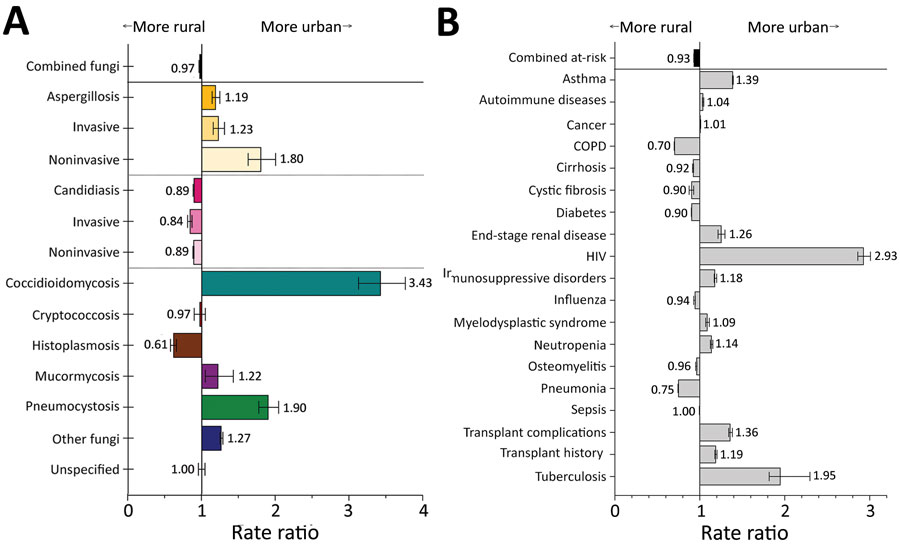Volume 28, Number 10—October 2022
CME ACTIVITY - Synopsis
Demographic and Socioeconomic Factors Associated with Fungal Infection Risk, United States, 2019
Figure 12

Figure 12. Comparison of rate ratios for fungal infections and risk conditions by residential location (urban vs. rural) among hospitalized patients, United States, 2019. A) Diagnosed fungal infections; B) risk conditions. Persons from more urban settings are considered those whose resident county has a population >50,000. Bars and numerals indicated rate ratios; error bars indicate 95% CIs. COPD, chronic obstructive pulmonary disease.
Page created: August 11, 2022
Page updated: September 21, 2022
Page reviewed: September 21, 2022
The conclusions, findings, and opinions expressed by authors contributing to this journal do not necessarily reflect the official position of the U.S. Department of Health and Human Services, the Public Health Service, the Centers for Disease Control and Prevention, or the authors' affiliated institutions. Use of trade names is for identification only and does not imply endorsement by any of the groups named above.